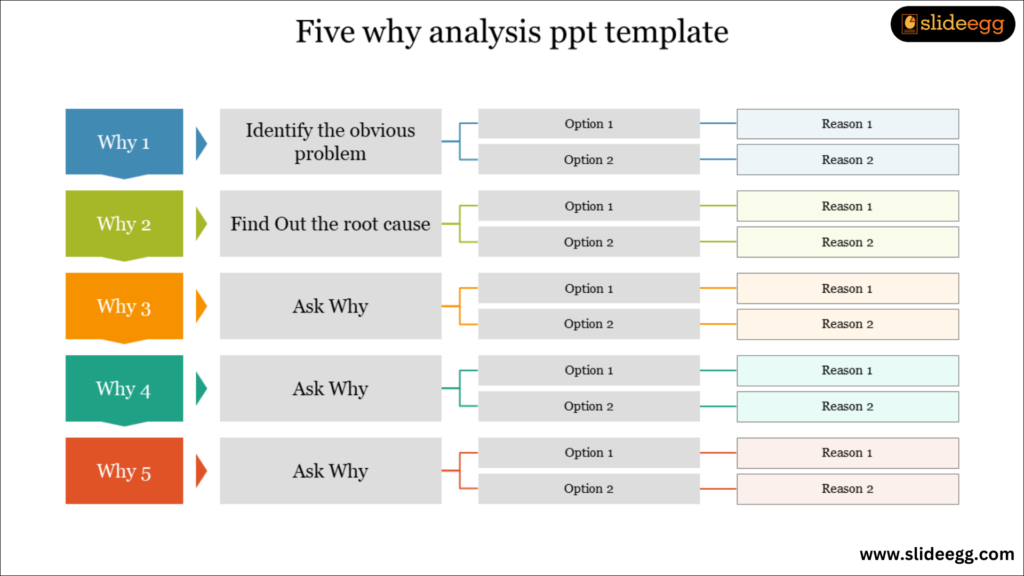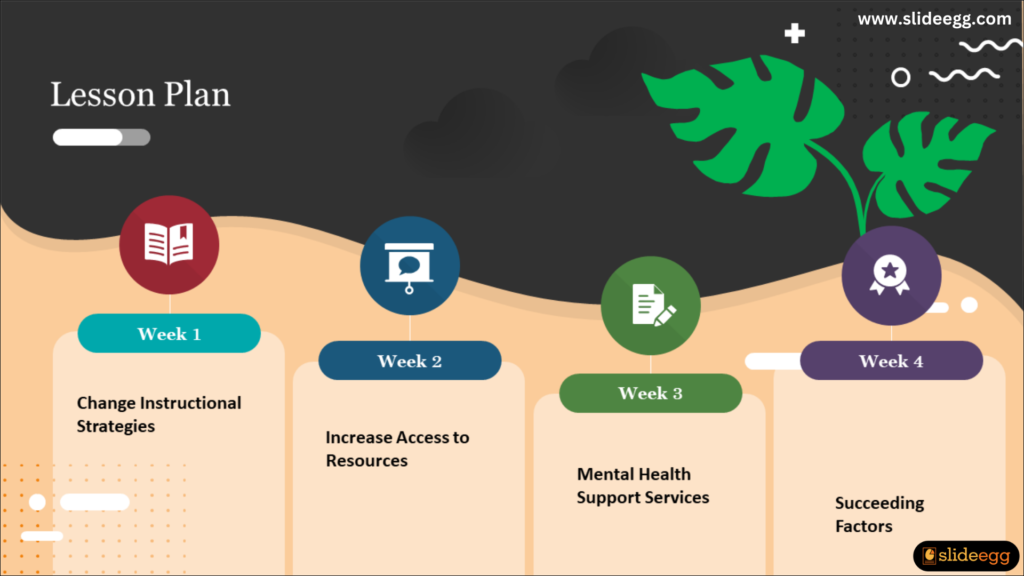“What if the secret to improving student performance lies not in teaching methods, but in identifying the underlying challenges they face? In this blog, we’ll explore how to effectively use the 5 Whys analysis to pinpoint learning barriers in education settings and find active solutions.
Why Identifying Learning Barriers is Important
Before discussing the 5 Whys technique, there is a need to understand the rationale for determining learning barriers. Research studies have indicated that more than 30% of students lack any kind of learning obstacles, but such factors often encompass mental or health disorders, socio-economic circumstances, and undiagnosed learning disabilities.
If these problems are left unchecked, they will lead to poor school performance, increased dropout rates, and diminished self-esteem. Determining these problems will help educators proffer solutions and interventions for all their students to succeed. It can be done more easily using the 5 why template PPT free download.
Step 1: Identify the Obvious Problem

The first 5 Whys step is the identification of the problem at the surface. It may simply be that a group of students fails consistently in mathematics. On the surface, this is a problem upon which you can start asking why questions to dig deeper.
Example
Problem: Children are failing math.
First Why: Why are children failing math?
Possible Answer: They do not understand concepts.
Step 2. Ask “Why?” to Unearth the Root Cause
After establishing the problem at hand, start asking “Why?” to find root causes. This process does require an open mind since at each step, more answers may crop up. Let’s use our math problem to try to find some deeper causes for students not understanding their math.
Second “Why?” question: Why do not the students understand the concepts?
Why? The method of teaching may not suit the learning style of a particular student.
This answer begins to show the first type of barrier to learning one has to overcome: teaching methods that are not equitable to all learners.
Step 3: Ask Why Four More Times
Now move back and determine what you are seeking: the cause. Usually, this process will require five cycles of questioning, but it may take more or fewer questions based on how in-depth the problem is.
Third “Why?”: Why the method of teaching is not suitable for all learning styles?
Answer: The students need more hands-on or visual aids.
Fourth “Why?”: Why are there inadequate learning aids in the first place?
Answer: They don’t have money or resources to provide these aids in the school.
Fifth “Why?”: Why don’t they have money for learning aids?
Answer: This budget has been distorted elsewhere, or there has been a communication breakdown about the need for resources to the administrators. In this stage, the cause is identified, which in this case is the basic need for funds and methods to teach.
Based on this point, the school can first source resources and teach students based on their needs.
5 Whys Common Learning Obstacles

Using the 5 Why process, the teachers can better understand many reasons in the process of learning, for example:
Learning Disability: The pupils might be suffering from undiagnosed conditions like dyslexia or ADHD and they need special support
Mental Health: Anxiety, stress, and depression might cause the students to avoid or ignore class and therefore fail to listen to or remember the information.
Socio-economic Factors: Poor students would not have access to essential books, internet, or areas to study.
Language issues: There could be comprehension or fluency problems if the students are from diverse linguistic backgrounds.
How to Use Findings to Change the Initiatives
When the root cause of a learning obstacle has been identified, it is time for action. Based on the outcome of the 5 Whys process, possible remedies can be:
Change Instructional Strategies: Teachers should utilize diversified instructional strategies, including the use of visualizers, group work, and one-to-one support.
Increase Access to Resources: Schools can re-designate budget dollars or seek grants to provide students with needed resources: learning aids, tutors, or technology.
Mental Health Support Services: School districts need to add a focus on mental health services, such as counselling or stress-management classes, to provide students with access to the support they need in dealing with those non-academic challenges. This can be made better using free PPT Templates.
The Difference Such Awareness Can Make
Thus, research evidence has depicted that if the identified barriers are given intervention-tailored support, then students improve their academic performance by 20% to 30%. This means periodic utilization of tools such as the 5 Whys method will uncover those hidden obstacles to help students better thrive.
Final Thoughts
The 5 Whys can be of great benefit for teachers when shifting from the apparent problems to the possible underlying causes of hindrances in learning; it enables schools to appreciate more what is happening in the minds and hearts of the students by repeatedly asking “Why”?
It is very effective where problems can be traced down to root causes, and a school may pinpoint the most appropriate solutions to be directed at the specific matter related to an academic issue, psychological factor, or resource deficiency.







